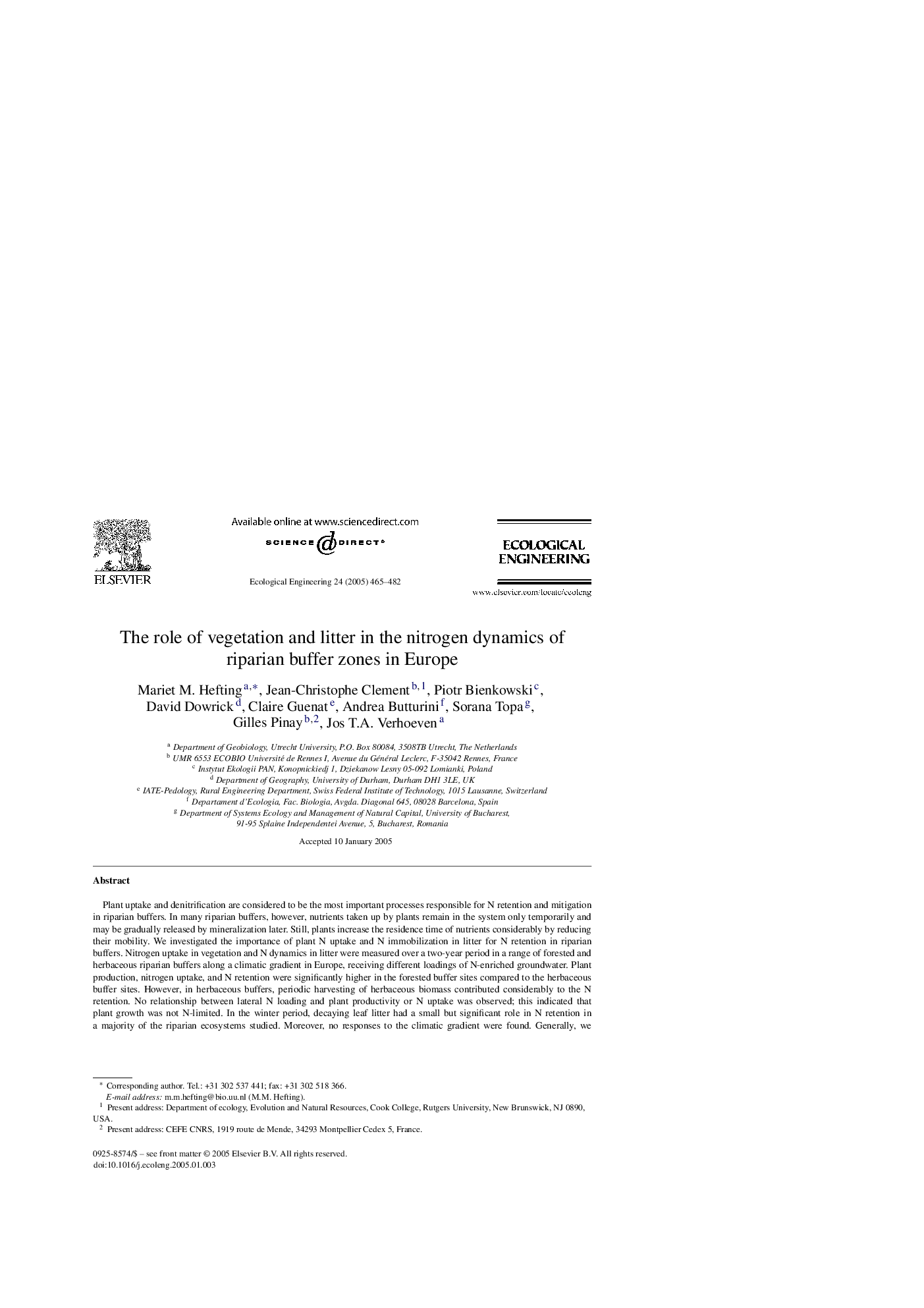| Article ID | Journal | Published Year | Pages | File Type |
|---|---|---|---|---|
| 9447534 | Ecological Engineering | 2005 | 18 Pages |
Abstract
Plant uptake and denitrification are considered to be the most important processes responsible for N retention and mitigation in riparian buffers. In many riparian buffers, however, nutrients taken up by plants remain in the system only temporarily and may be gradually released by mineralization later. Still, plants increase the residence time of nutrients considerably by reducing their mobility. We investigated the importance of plant N uptake and N immobilization in litter for N retention in riparian buffers. Nitrogen uptake in vegetation and N dynamics in litter were measured over a two-year period in a range of forested and herbaceous riparian buffers along a climatic gradient in Europe, receiving different loadings of N-enriched groundwater. Plant production, nitrogen uptake, and N retention were significantly higher in the forested buffer sites compared to the herbaceous buffer sites. However, in herbaceous buffers, periodic harvesting of herbaceous biomass contributed considerably to the N retention. No relationship between lateral N loading and plant productivity or N uptake was observed; this indicated that plant growth was not N-limited. In the winter period, decaying leaf litter had a small but significant role in N retention in a majority of the riparian ecosystems studied. Moreover, no responses to the climatic gradient were found. Generally, we can state that annual N retention in the vegetation and litter compartment is substantial, making up 13-99% of the total N mitigation.
Related Topics
Life Sciences
Agricultural and Biological Sciences
Ecology, Evolution, Behavior and Systematics
Authors
Mariet M. Hefting, Jean-Christophe Clement, Piotr Bienkowski, David Dowrick, Claire Guenat, Andrea Butturini, Sorana Topa, Gilles Pinay, Jos T.A. Verhoeven,
